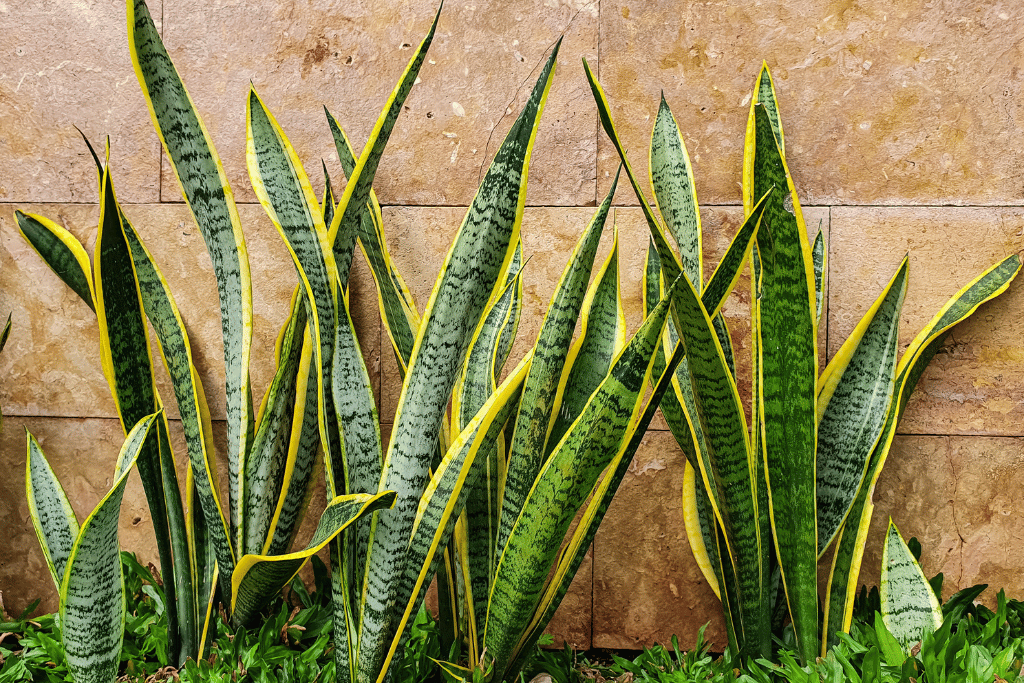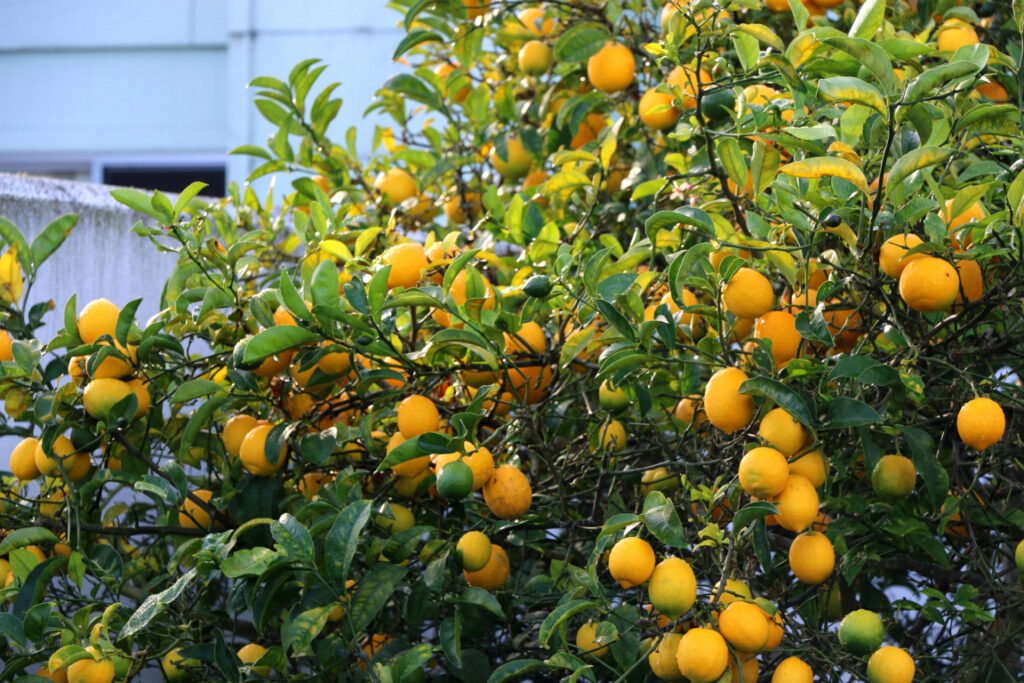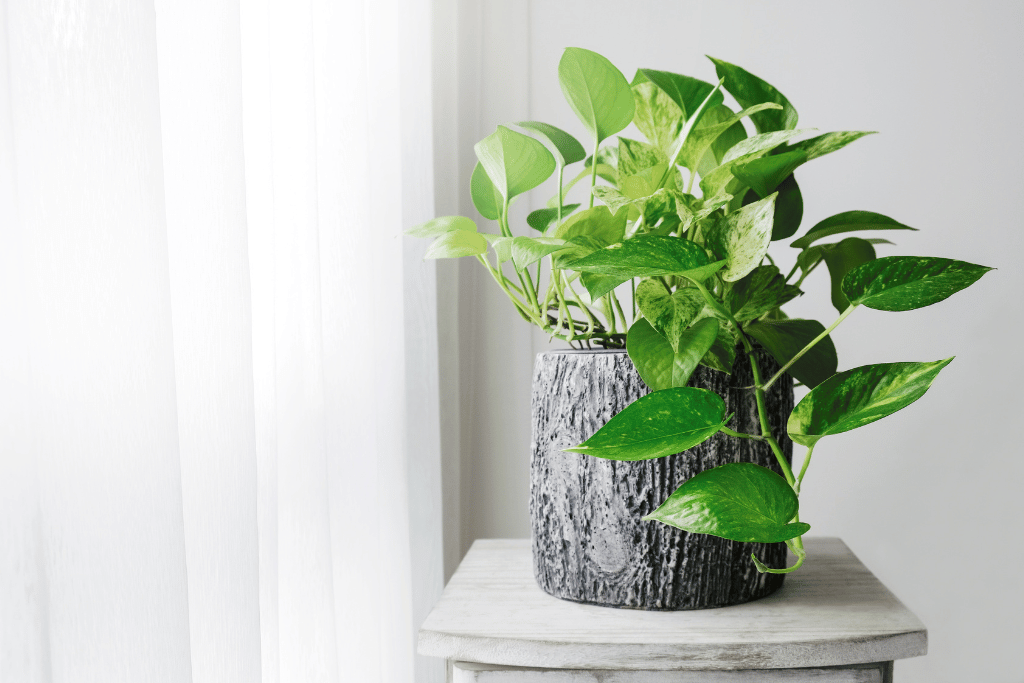
Looking for a plant that’s easy to care for and visually striking? Meet the Harlequin pothos! With its uniquely patterned leaves and trailing vines, this pot-dweller is a must-have for any indoor jungle enthusiast. Despite its dramatic appearance, this houseplant is also a breeze to maintain, making it the perfect choice for both experienced and novice gardeners. Below we’ll fill you in on all the necessary details on how to make your new leafy companion thrive in your home.
Let’s Get Familiar With The Harlequin Pothos
The Harlequin pothos’s scientific name is Epipremnum aureum, which is a member of the Araceae family, that also includes popular greens like the philodendron and the peace lily.
This plant is native to the Solomon Islands in the South Pacific, where it grows as an epiphyte – a plant that grows on other plants – in the humid tropical rainforests. In its natural habitat, it can climb high into the tree canopy, using its aerial roots to anchor itself to tree trunks and branches. However, under domesticated conditions, it is more commonly found in hanging baskets or trained to climb up moss poles.
One of the most distinctive features of the Harlequin pothos is its unique patterned leaves. The heart-shaped leaves are marbled with shades of green, cream, and white, creating a stunning contrast that resembles the diamond pattern of a harlequin’s costume. The size of the leaves varies from small and delicate to quite large and robust, depending on the conditions in which the plant is grown. Under ideal conditions, it typically grows up to several feet in length.
This green usually does not produce flowers indoors, but it is still a highly decorative plant. Unlike several of its counterparts that require a lot of attention and care, the Harlequin pothos is relatively low-maintenance, making it a popular choice for both seasoned and novel plant parents.
It prefers bright, indirect light, but does not mind lower light levels as well. It also does well in a variety of temperatures, although it prefers to be kept in a warm, humid environment.
In terms of its suitability for indoor or outdoor growing, the plant is primarily an indoor plant. While it can be grown outside in warm, tropical climates, it is not frost-tolerant and is best kept between walls in most locations. As an indoor plant, it contributes to air purification, making it a popular plants for offices or home companion.
Harlequin Pothos vs Manjula

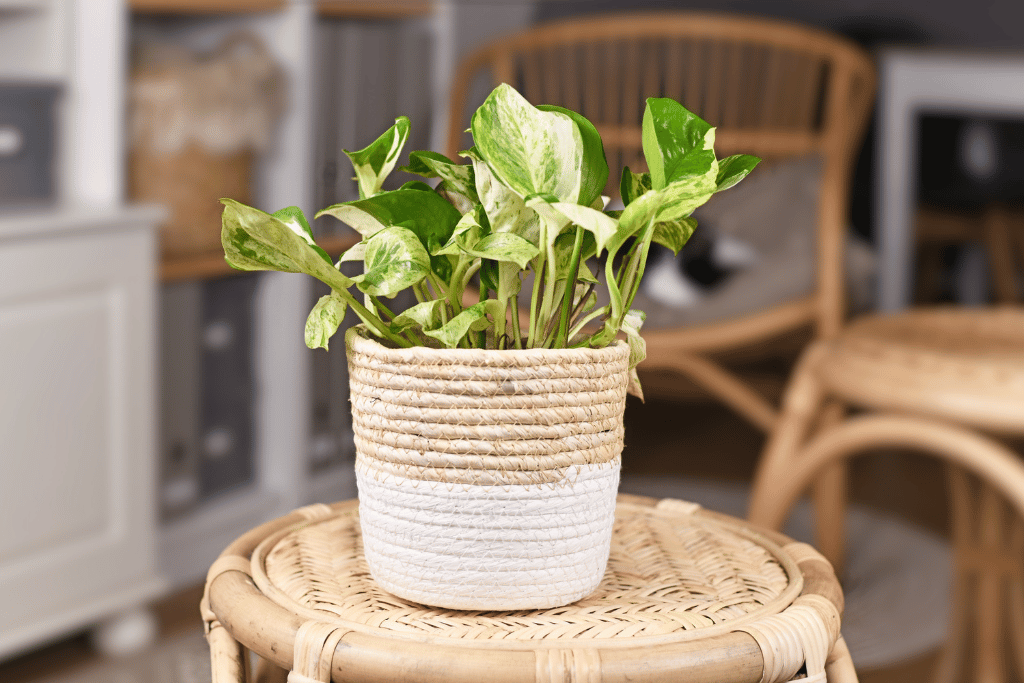
Both Harlequin pothos and Manjula are popular greens that don’t require much attention but still add a touch of nature to any winter garden, apartment, or house. While they may seem similar at first glance, there are several key differences between them.
Harlequin pothos, is a variegated variety of the classic pothos plant. It features uniquely shaped leaves that are green with splashes of yellow and white. It is a fast-growing survivor that thrives in a variety of lighting conditions and helps clean the air around us.
On the other hand, Manjula, also known as Dracaena fragrans is a type of dracaena plant that features long, narrow leaves with creamy white and green stripes. While it also tolerates scarce light sources, they are most happy in bright spots with lots of indirect light. Manjula pothos is slower growing than Harlequin.
In terms of care, both plants require similar conditions. They prefer well-draining soil, moderate watering, and occasional fertilization. However, Harlequin pothos is more forgiving of overwatering, making it a great choice for beginners.
Harlequin Pothos Care
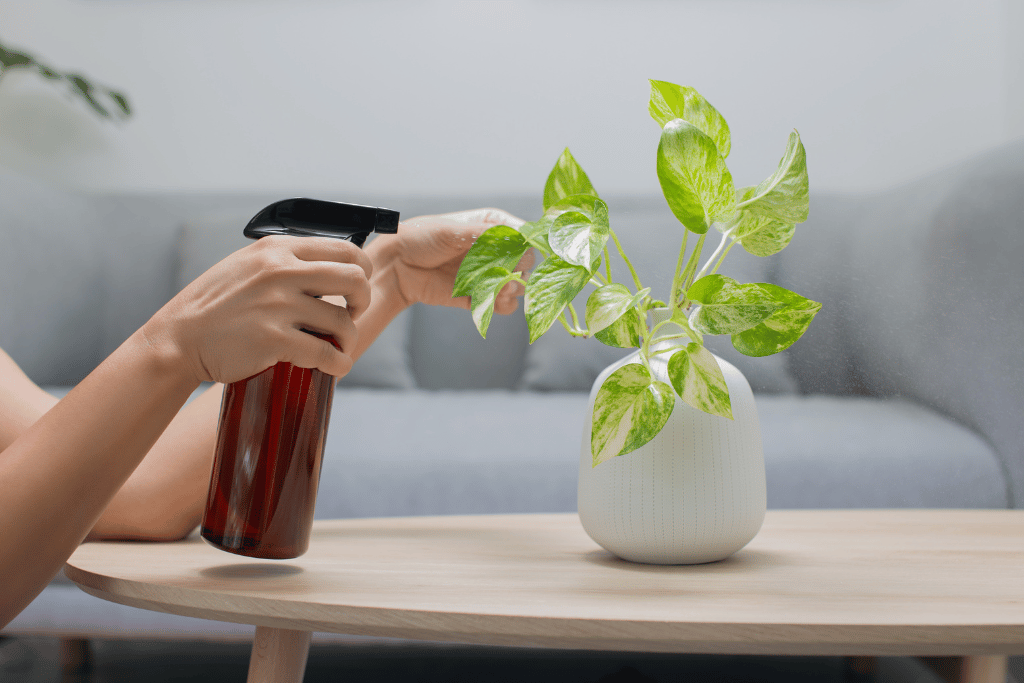
Now that we’ve settled the Harlequin pothos vs Manjula debate, let’s move on to the detailed care instructions. You might wonder why this is so significant if the plant doesn’t involve lots of responsibility. Well, it’s true that your leafy friend won’t get upset if you accidentally skip a couple of waterings, however, it certainly won’t thrive either if neglected. So, to ensure that it lives a long a happy life, it’s recommended to keep the following tips.
1. Watering
When it comes to watering, the key is to keep the soil consistently moist but not soggy.
To achieve this, water your houseplant when the top inch of soil feels dry to the touch. This is expected to happen approximately after a week. It’s crucial not to let the soil dry out completely, as this can cause the leaves to wilt and even drop.
On the other hand, overwatering may lead to root rot and other fungal diseases. To prevent this, make sure that the pot has good drainage and avoid letting the roots sit in standing water.
During the growing season (spring and summer), your Harlequin pothos may require more to drink, while in the dormant season (fall and winter), it can get along well with minimum water. A good rule of thumb is to always adjust your watering schedule according to the plant’s needs, which are usually affected by climate and potting mix conditions.
2. Light
This resilient plant prefers bright, indirect light but also endures poorer lighting. Placing it in a spot with direct sunlight runs the risk of scorched and damaged leaves. So, it’s best to put your pot-dweller near a window with sheer curtains or in a shaded area.
If the leaves start to turn yellow or brown, it might be an indication that the plant is receiving too much light. The Harlequin pothos grows nicely in moderate light, however, the variegation on the leaves potentially won’t be that prominent. To enhance it, just place it somewhere lighter, like in a north-facing window. Alternatively, artificial lighting might also work.
3. Soil
The best potting mix for Harlequin pothos is well-draining with moisture retention. Moreover, it should be rich in nutrients and organic matter. Therefore, a mix that contains peat moss, perlite, and vermiculite in equal parts sounds just ideal. Peat moss is an excellent ingredient to keep moisture in the soil, while perlite fosters drainage and vermiculite helps improve aeration.
It is essential to note that your leafy companion doesn’t do well in soil that is too heavy or dense. These conditions lead to waterlog and rotting roots, so it’s recommended to avoid using a mix that contains too much clay.
Additionally, to ensure that the potting soil is free from pests, diseases, and weed seeds, choose sterilized soil or soilless mixes that reduce the risk of introducing unwanted parasites or diseases to your plant.
When repotting your Harlequin pothos, pick a container that is slightly larger than the current one for the roots to have enough space to stretch. Drainage holes are also essential elements that make it easy for excess water to escape.
4. pH
The plant typically thrives in a slightly acidic to neutral soil pH level of 6.0 to 7.0. This means that the appropriate environment is neither too alkaline nor too acidic and provides the ideal conditions for healthy and continuous growth. Since the pH level affects the availability of nutrients in the soil, the unsuitable range sets the plant up for nutrient deficiencies, stunted development, and other issues. To maintain the perfect potting mix pH level, use a pH testing kit to monitor the soil regularly and adjust it as needed with the right amendments.
5. Temperature
A proper Harlequin pothos care guide wouldn’t be complete without mentioning optimal temperature levels. The best possible temperature for your plant would be between 65-85°F (18-29°C). Although we are talking about a relatively undemanding green, it’s still advised to keep it away from cold drafts and extreme heat sources. Consistency is key, as sudden temperature changes can be shocking and damaging, bringing about symptoms like wilting and browning of leaves. Try to find the golden mean – not too hot and not too cold.
6. Humidity
The Harlequin pothos enjoys moderate to high humidity levels, which mimics its natural tropical environment. Therefore, to keep it healthy, aim for a humidity range between 40% to 60%. If the air is too dry, it will display brown or droopy leaves or halted growth. This is your warning sign to increase the water content of the air by misting the plant with room temperature water. However, be careful not to overdo this practice to avoid rotting roots. By giving your plant adequate humidity, you’ll enjoy a lush and vibrant addition to your home.
7. Fertilizing
When it comes to fertilizing this green, it’s essential to keep a few things in mind. First, utilize a balanced, liquid-based fertilizer with an equal ratio of nitrogen, phosphorus, and potassium. Second, only fertilize once each month during the growing season, which typically runs from spring to summer. And third, don’t go too heavy on it – applying too much product may eventually backfire and cause more harm than benefit.
Remember: it’s always better to under-fertilize than over-fertilize. Trust us, your potted pal will thank you for it with its lively and healthy foliage.
Harlequin Pothos Price and Availability
Due to its rarity, chances are finding this plant will pose a bit of a challenge. But no worries – it’s far from impossible to get your hands on an exquisite piece that price-wise ranges anywhere around $10-$50.
One of the best places to begin the search is reputable online nurseries. A simple internet search will bring up a variety of retailers that specialize in rare and unique houseplants. Dedicate proper time for research and read reviews before making a purchase to make sure the seller is trustworthy. Why is this so important? Well, unfortunately, the high demand for Harlequin pothos has led to some dishonest merchants deceiving buyers by selling Manjula pothos as Harlequin. In order not to fall for this trap, it’s crucial to know what the original plant looks like, and purchase from a reputable seller.
During your online browsing, search for plants with well-established roots and healthy foliage. Ensure the shipping in appropriate packaging to circumvent the occurrence of any potential damage. If possible, only buy from vendors who have a proven track record of providing high-quality specimens.
Wrapping Up
In conclusion, the Harlequin pothos is a fantastic houseplant option for anyone looking to add some natural beauty to their home or office without the need for constant maintenance. Its unique patterned leaves and trailing vines make it a visually stunning addition to any indoor space. By following the simple care instructions provided, even those new to gardening can have success with this resilient green. Enjoy the many benefits it has to offer, such as air purification and the creation of a relaxing, tropical ambiance. So go ahead, bring home your new addition, and get into the fun of home gardening!
Frequently Asked Questions (FAQ)
Can I propagate Harlequin pothos?
Yes, it can be propagated through stem cuttings. The best time for this is in spring or summer when the plant is actively growing. To propagate, take a stem cutting that is at least 4 inches long and has several leaves. Remove the bottom leaves and dip the cut end in rooting hormone before placing it in a container filled with moist potting soil. Keep the mix damp and the container in a warm, sunny location, and roots should start to form within a few weeks.
Is the plant toxic to pets?
Yes, it is, specifically to dogs and cats, that usually have easier access to it. The green contains calcium oxalate crystals, which may cause irritation and swelling in the mouth, tongue, and throat if ingested. Symptoms of further toxicity include drooling, difficulty swallowing, vomiting, and loss of appetite. In severe cases, ingestion can cause respiratory distress and even death. Therefore, pet owners should keep the plant away from furry friends or choose a pet-safe alternative if they have animals that might be inclined to sneak around containers.


